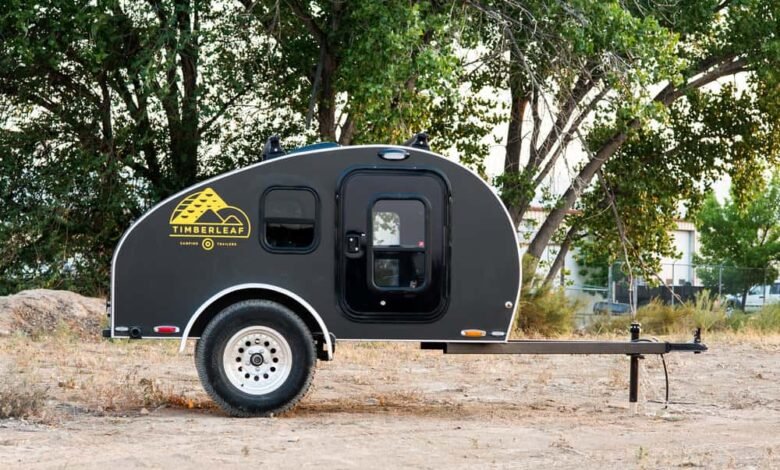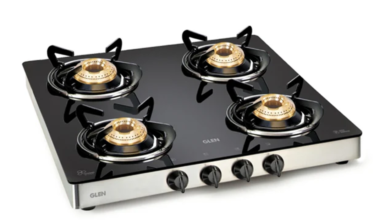Exploring the Freedom of the Road: The Complete Guide to Small Campers and Micro Campers

There’s something deeply freeing about hitting the open road with everything you need tucked neatly behind you. No reservations, no check-ins just you, the horizon, and that satisfying hum of tires meeting the pavement. For many, that dream has found a compact, efficient form in the rise of the small camper and its even tinier cousin, the micro camper.
These lightweight travel marvels aren’t just a trend. They’re a statement about how we see travel, freedom, and simplicity. Whether you’re downsizing from a motorhome or stepping into the RV world for the first time, these compact campers offer a kind of magic that larger rigs simply can’t.
Why Small Campers Are Having a Big Moment
It’s easy to see why small campers are everywhere lately. Gas prices fluctuate, campsites get busier, and people crave simplicity. A small camper hits a sweet spot between comfort and minimalism giving you enough space to live and sleep comfortably, but small enough to tow with most SUVs or crossovers.
You don’t need a big truck or an expensive diesel engine to explore anymore. That accessibility alone has opened the doors for a new generation of adventurers. Couples, solo travelers, retirees, digital nomads everyone’s discovering that small can still mean mighty.
Then there’s the cost. Let’s be honest: full-size RVs can drain your wallet fast. Between maintenance, insurance, and storage, they’re not for everyone. But a small camper? It’s a budget-friendly entry point that still delivers all the essentials.
And perhaps the biggest draw they make spontaneous travel possible. With less setup time and easy mobility, you can decide on a Friday night to escape the city and be camping under starlight by midnight. That’s freedom in its purest form.
Micro Campers: Tiny Trailers with Enormous Personality
If small campers are about efficiency, micro campers take that idea and push it to the extreme in the best possible way. These ultra-compact trailers are often under 1,500 pounds, small enough to tow behind almost any vehicle, even compact cars.
They’re the minimalist’s dream. Just enough room to sleep, store essentials, and sometimes cook. Yet, step inside a well-designed micro camper, and you’ll be surprised how much comfort can fit into such a tiny footprint.
Many models come with convertible beds, pull-out kitchens, solar setups, and clever modular storage systems. It’s like someone shrunk a cozy cabin and added wheels. You might not get standing height or a full bathroom, but what you lose in size, you gain in flexibility and simplicity.
The Philosophy Behind Going Small
There’s something philosophical about choosing a smaller camper. It’s not just about saving money or towing weight it’s about intention. You start to realize that travel isn’t about accumulating stuff but about creating experiences.
When you’re inside a micro camper, every inch counts. You learn to pack smarter, think simpler, and appreciate the essentials a hot meal, a comfortable bed, a breathtaking view outside your door. There’s beauty in that kind of minimalism.
And maybe that’s why so many seasoned RVers are scaling down. After years of managing giant rigs, many find themselves craving the uncomplicated joy of a smaller setup. It’s a shift from “how much can I bring?” to “how free can I feel?”
Different Types of Small Campers
Not all small campers are created equal. Depending on your lifestyle and travel goals, you’ll find plenty of options that balance comfort, weight, and design. Let’s break down some of the most popular types.
1. Teardrop Campers
The classic teardrop shape compact, curved, and timeless has been charming travelers since the 1940s. These are some of the most recognizable micro campers on the market. They’re lightweight, aerodynamic, and often include a rear galley kitchen under a flip-up hatch.
Inside, you usually get a bed and maybe a bit of cabinetry not much else. But their charm lies in simplicity. Park one anywhere, and you’ll be ready to sleep within minutes.
2. Pop-Up Campers
Pop-up campers are the shape-shifters of the camping world. They fold down for easy towing and storage, then expand at the campsite into surprisingly spacious living areas. Many feature canvas sides, beds that slide out, and small kitchenettes.
They’re ideal for families who need extra sleeping space but don’t want the weight or cost of a full travel trailer.
3. Small Hard-Side Trailers
Hard-side campers like the Scamp or Casita offer more insulation, security, and weather resistance than soft-sided options. They typically include a small dinette, bed, kitchenette, and sometimes a wet bath.
These models blur the line between “small camper” and “full-featured RV,” giving you long-term comfort in a manageable size.
4. Off-Road Micro Campers
Adventure lovers have embraced rugged micro campers that can handle dirt tracks and forest roads. Equipped with lifted suspensions, all-terrain tires, and reinforced frames, these compact beasts are built for the wild.
You’ll often find roof racks for kayaks, solar panels, and even outdoor shower setups. Perfect for off-grid exploration without the bulk.
How Much Does a Small Camper Cost?
The price range for small campers varies widely, depending on features and brand. Entry-level teardrop trailers start around $6,000 to $10,000, while high-end small hard-side campers can climb to $30,000 or more.
Used models offer even better value. With the surge in popularity, the market for pre-owned small campers and micro campers has grown significantly. A lightly used trailer might save you thousands, with minimal wear.
Of course, you’ll want to inspect carefully check seals, look for signs of leaks, and test appliances. But overall, the smaller footprint often means less to go wrong, and that’s a big plus for budget-conscious travelers.
Towing Made Simple
One of the biggest barriers to RV ownership is towing anxiety. Many first-timers worry about handling large trailers. But with small campers, that fear quickly fades.
These compact units are designed for easy maneuverability. Most weigh under 3,500 pounds, meaning even a midsize SUV can tow them safely. You won’t need a heavy-duty pickup or a special license.
Backing into campsites is also easier. Some micro campers are so light you can move them by hand literally unhook and roll them into position. Try that with a 30-foot fifth wheel.
And since they’re aerodynamic, your fuel efficiency stays reasonable. You might lose a few miles per gallon, but not the kind of drop that makes long trips painful on the wallet.
Interior Comfort: Small Spaces, Big Ideas
When you step inside a well-designed small camper, you realize how much innovation has gone into these little spaces. Every surface, cabinet, and cushion serves multiple purposes.
Convertible dinettes turn into beds. Drawers double as steps. Even walls might hide fold-down tables or storage cubbies. Manufacturers have learned that small doesn’t mean uncomfortable.
In fact, many owners describe small campers as cozy more personal and connected to nature. When you’re just a few feet from your windows, you can wake up with sunlight spilling in, not the glow of fluorescent ceiling lights like in some RV parks.
And then there’s the craftsmanship. Some of the best micro campers feature wood interiors, artisanal details, and minimalist aesthetics that feel almost Scandinavian in design.
It’s the kind of simplicity that feels intentional quiet, elegant, and practical all at once.
The Joy of Simplicity
There’s a quiet kind of joy in having fewer moving parts. You don’t have to worry about multiple slide-outs, heavy generators, or complex electrical systems. You pack your essentials, hitch up, and go.
Maintenance? Minimal. Most small campers can be cleaned and checked in under an hour. Tires, bearings, seals that’s about it. No need for a mechanic degree to keep things running smoothly.
This simplicity brings something else, too: peace of mind. When you’re miles from the nearest town, it’s comforting to know there’s less that can go wrong.
Where Can You Take a Small Camper?
Almost anywhere. That’s one of the biggest advantages.
Small campers fit into campsites that large RVs can’t. You can maneuver into tight forest roads, remote mountain spots, or cozy lakeside clearings. Many National Parks and boondocking areas favor smaller rigs since they leave a lighter footprint.
And when it’s time to store your camper, you’ll appreciate the smaller size even more. Many can fit into a driveway or standard garage no need to pay monthly storage fees.
Small Campers and Sustainability
There’s also an environmental story here. Smaller campers use fewer materials, consume less fuel, and encourage lower-impact travel.
When you’re towing a micro camper, your carbon footprint is a fraction of what it would be with a big motorhome. Solar panels and lithium batteries make it easy to camp off-grid responsibly, without constant generator use.
Some eco-conscious builders even use recycled materials, bamboo interiors, and sustainable insulation. So if you care about leaving nature as beautiful as you found it, going small aligns perfectly with that mindset.
What to Look for When Buying a Small Camper
Choosing the right small camper can feel overwhelming, especially with the growing variety on the market. Here’s what to consider:
Weight: Make sure your tow vehicle can handle it easily. Check the GVWR (Gross Vehicle Weight Rating).
Layout: Decide what matters most sleeping comfort, cooking space, or storage.
Construction: Fiberglass shells are durable and low-maintenance, while aluminum frames offer lightness and strength.
Insulation: If you plan to camp year-round, look for good insulation and double-pane windows.
Power Setup: Solar options, battery capacity, and plug-in compatibility make a difference for off-grid trips.
Resale Value: Some small campers (like Scamp, Casita, and Escape) hold value exceptionally well.
Take your time, walk through different models, and imagine real-life use. Where will you store your gear? Can you move comfortably inside? These small details make or break the ownership experience.
Living the Small Camper Life
Owning a small camper isn’t just about the unit itself it’s about embracing a lifestyle. The people who choose these campers often share a similar spirit: curiosity, self-sufficiency, and a love for freedom.
It’s not about luxury. It’s about waking up to the sound of rain on the roof, cooking breakfast under a canopy of trees, or sitting by a campfire watching the stars. It’s about being close to what matters.
Many small camper owners join online communities or caravan groups where they share routes, tips, and modifications. There’s a friendly camaraderie in this world less competition, more connection.
And because small campers are easier to move, you’ll likely travel more often. Weekend getaways become second nature. The barrier between “dreaming” and “doing” disappears.
Small Camper Brands Worth Knowing
While there are dozens of manufacturers, a few stand out for their craftsmanship, innovation, and reputation. Here are some you’ll want to check out:
Scamp Trailers (Minnesota, USA): Lightweight fiberglass classics with cult-like followings.
Casita Travel Trailers: Durable, compact, and beautifully efficient.
NuCamp TAB and TAG: Known for modern teardrop styles with clever European-inspired interiors.
Happier Camper: Offers modular interiors with futuristic design and flexibility.
Escapod and Timberleaf: For off-road enthusiasts craving adventure-ready micro campers.
Each brand brings something unique, but all share the same promise: compact design, efficient use of space, and the freedom to roam.
Tips for Traveling with a Small Camper
Once you’ve got your camper, the fun begins. But there are a few things seasoned travelers wish they’d known early on:
Pack Light: Overpacking ruins the whole point. Stick to essentials and multi-use items.
Practice Hitching: Do it a few times before your first trip. Confidence makes everything smoother.
Plan Your Stops: Small campers are flexible, but planning fuel and rest stops helps.
Check the Weather: Smaller campers are lighter; strong winds can affect towing.
Stay Level: Always bring leveling blocks a good night’s sleep depends on it.
Enjoy the Process: The journey is half the fun. Stop often. Explore small towns. Take detours.
You’ll find your rhythm soon enough. And once you do, it’s addictive.
Common Myths About Small Campers
Let’s clear up a few misconceptions that keep some folks from downsizing.
“They’re too cramped.”
Not really. With clever layouts and convertible furniture, small campers feel surprisingly roomy.
“You can’t camp in bad weather.”
Modern models have excellent insulation and durable exteriors. You’ll stay warm and dry through storms.
“They don’t have bathrooms.”
Some do! Others make great use of cassette toilets, outdoor showers, or nearby facilities.
“They’re just for weekend trips.”
Plenty of people live full-time in micro campers. It’s all about how you organize and adapt.
Why Small Campers Might Be the Future of RV Travel
As cities grow denser and life gets busier, more people crave balance a way to disconnect without complicating things. The small camper trend isn’t just about space; it’s about mindset.
It’s sustainable, flexible, and affordable. You can store it at home, tow it with your daily car, and maintain it without draining your savings. It makes travel more attainable and that’s powerful.
In an age where “more” often means “better,” small campers remind us that less can actually mean more freedom. More time outdoors, more spontaneous trips, more connection with what matters.
A Glimpse Into the Micro Camper Movement
The micro camper movement is especially fascinating. It’s attracting creatives, explorers, and even remote workers who see their camper not just as a vehicle, but as a lifestyle capsule.
Some convert cargo trailers or even retro teardrops into personalized rolling studios. Others build DIY setups from scratch using lightweight materials and solar power.
Social media has amplified this movement from YouTube van-life channels to minimalist travel blogs, these stories resonate because they’re real. People are reclaiming independence, redefining what travel looks like.
When you see someone towing a micro camper into the mountains at sunset, you can’t help but think: maybe that’s what freedom actually looks like.
Final Thoughts: Small Camper, Big Dreams
If you’ve ever dreamed of traveling light, waking up in new places, and simplifying your life, a small camper might be your next great adventure.
It’s not about roughing it or giving up comfort it’s about choosing what matters. The open road, a quiet campfire, a sunrise reflected in a lake. These aren’t luxuries; they’re the reasons we travel in the first place.
The world of small campers and micro campers proves that you don’t need something massive to live a big life. Sometimes, the smallest spaces hold the grandest adventures.
So maybe the question isn’t “how big of a camper can I get?” but rather, “how free do I want to feel?”
Because in the end, that’s what it’s all about freedom, simplicity, and the joy of knowing that everything you need is right there with you, wherever the road leads next.





